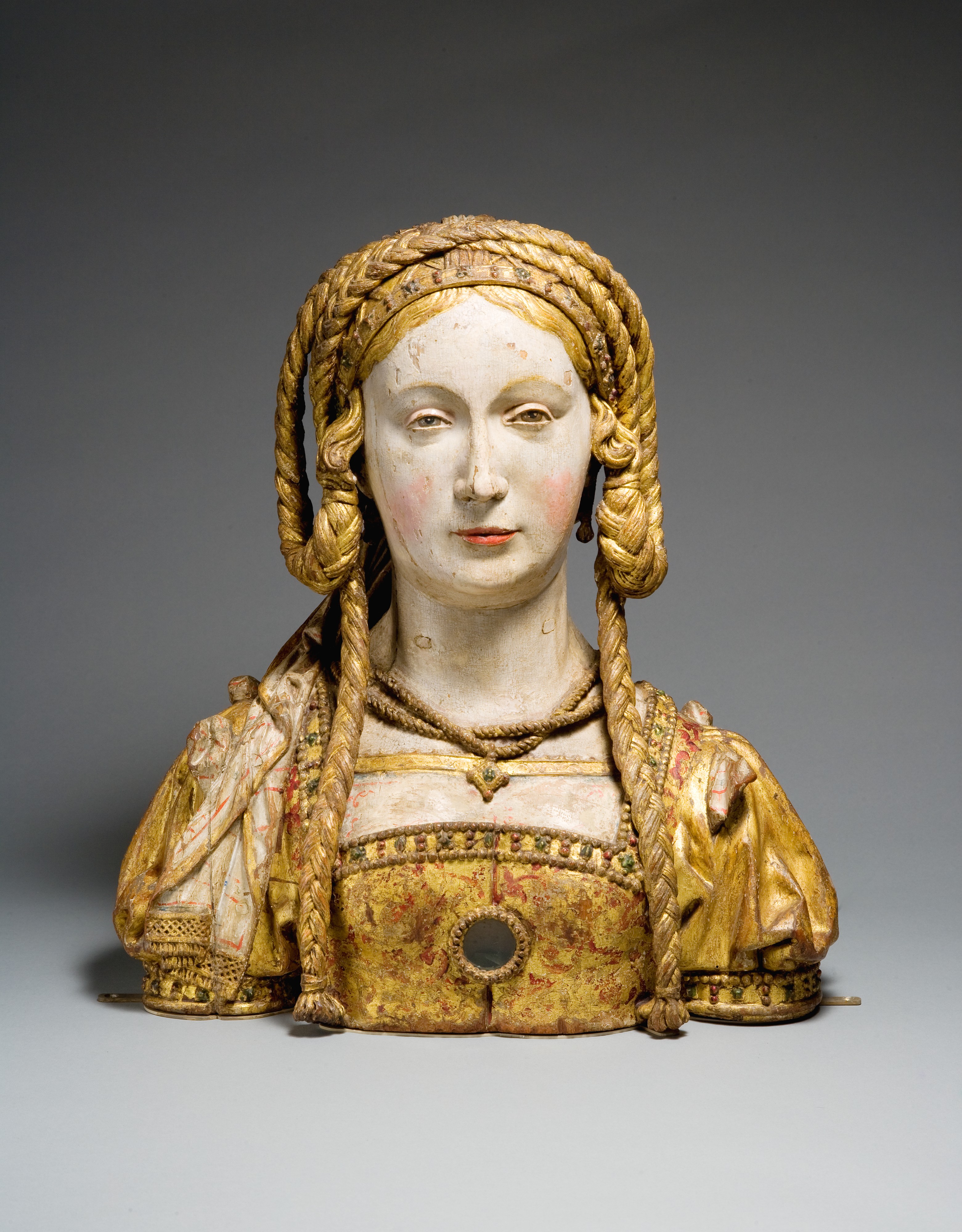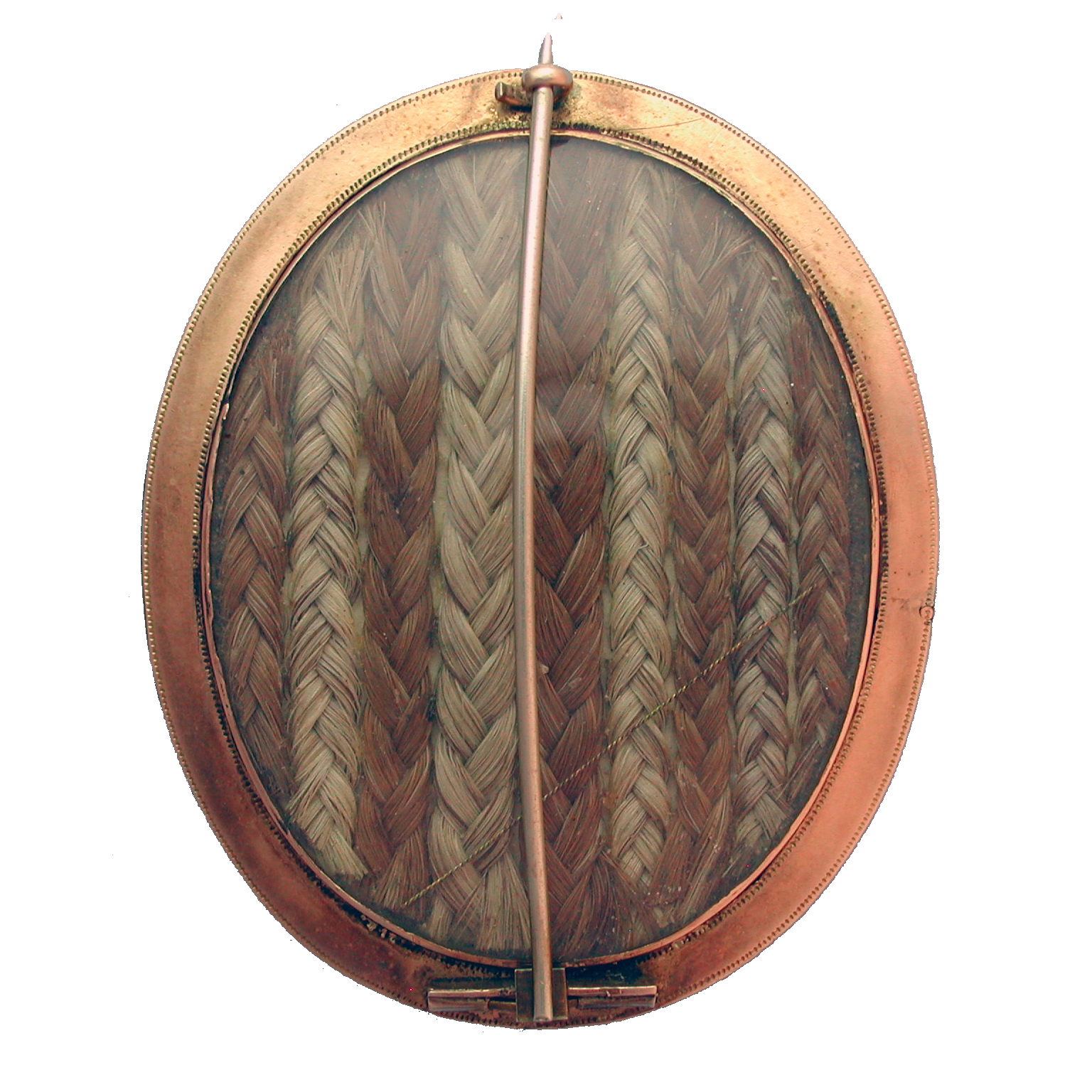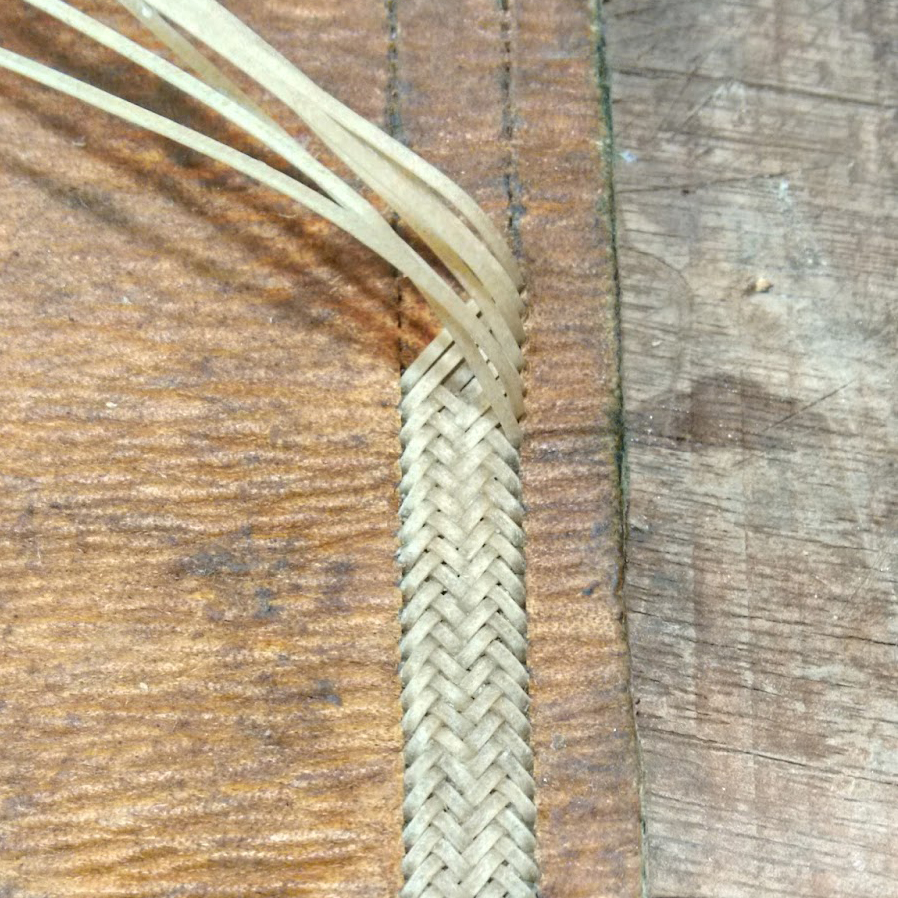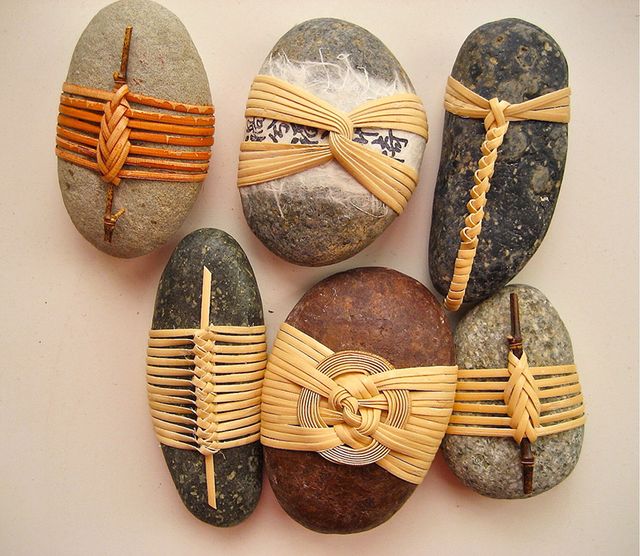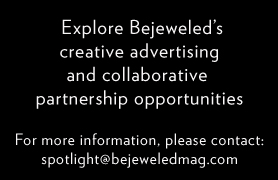Baltera-A Duo of Sculptors turn their keen eye to fine jewelry
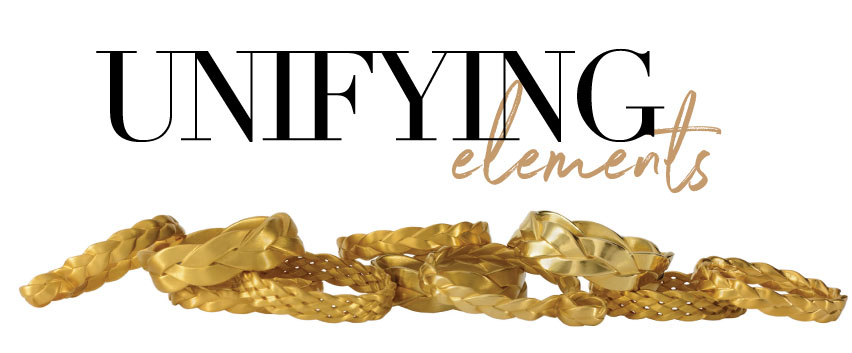
Part of our Ringing in The New Year series of designer and antique rings, museum exhibits, films and how to wear rings.
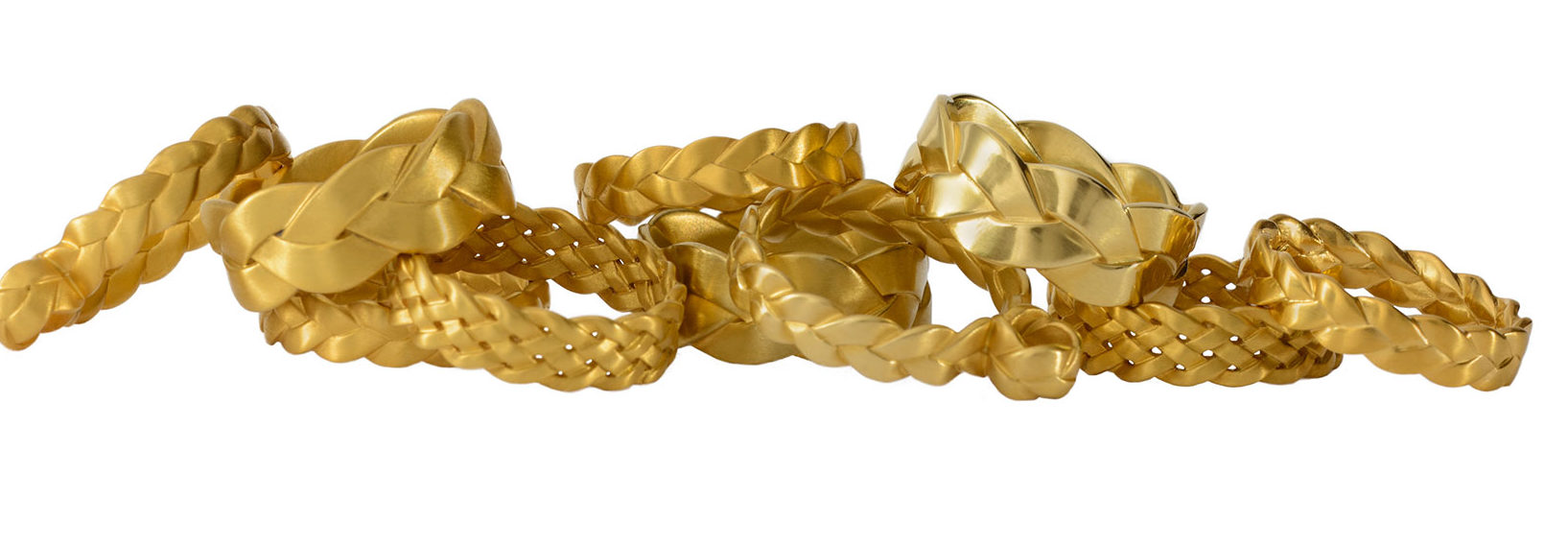 From award winning large cast iron, aluminum and bronze sculptures to launching their own fine jewelry collection, the dynamic duo of Rudolf Baltera and Julie Gamble not only create intricate aesthetically beautiful pieces, but jewelry that is the embodiment of permanence–pieces that are steeped in history yet defined with a contemporary sensibility and designed socially, responsibly and ethically.
From award winning large cast iron, aluminum and bronze sculptures to launching their own fine jewelry collection, the dynamic duo of Rudolf Baltera and Julie Gamble not only create intricate aesthetically beautiful pieces, but jewelry that is the embodiment of permanence–pieces that are steeped in history yet defined with a contemporary sensibility and designed socially, responsibly and ethically.
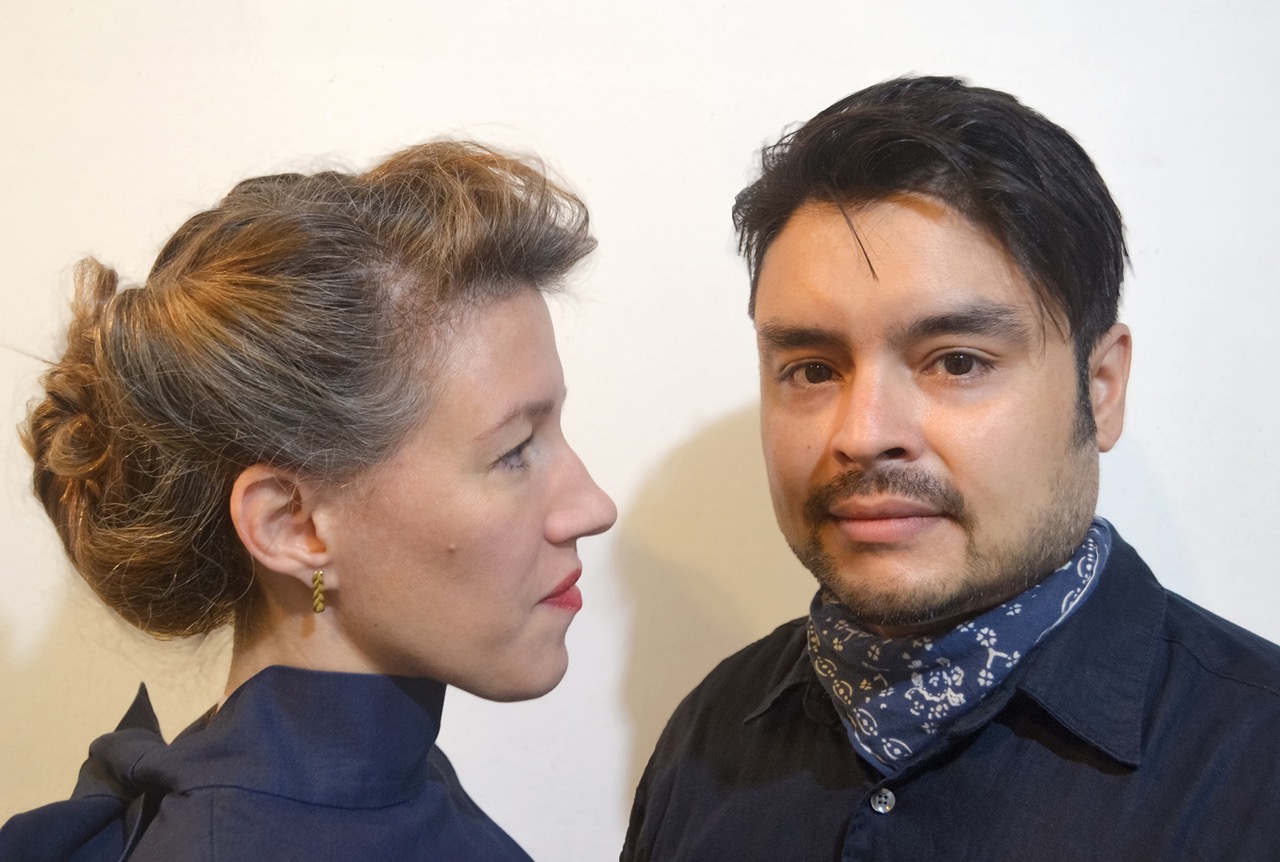
Julie Gamble and Rudolph Baltera
Down-to-earth, straightforward, quick-witted and huge fans of New York City, the city in which they live—Rudy and Julie are the real deal. They don’t just talk the talk but have gone to great lengths to preserve their integrity of design and the way in which they produce, outsource and obtain their gemstones. They believe that being involved in every step of the creation to the completion of the piece leads to an aesthetically genuine collection—pieces that will last “and ought to –for years and years,” says Rudy.
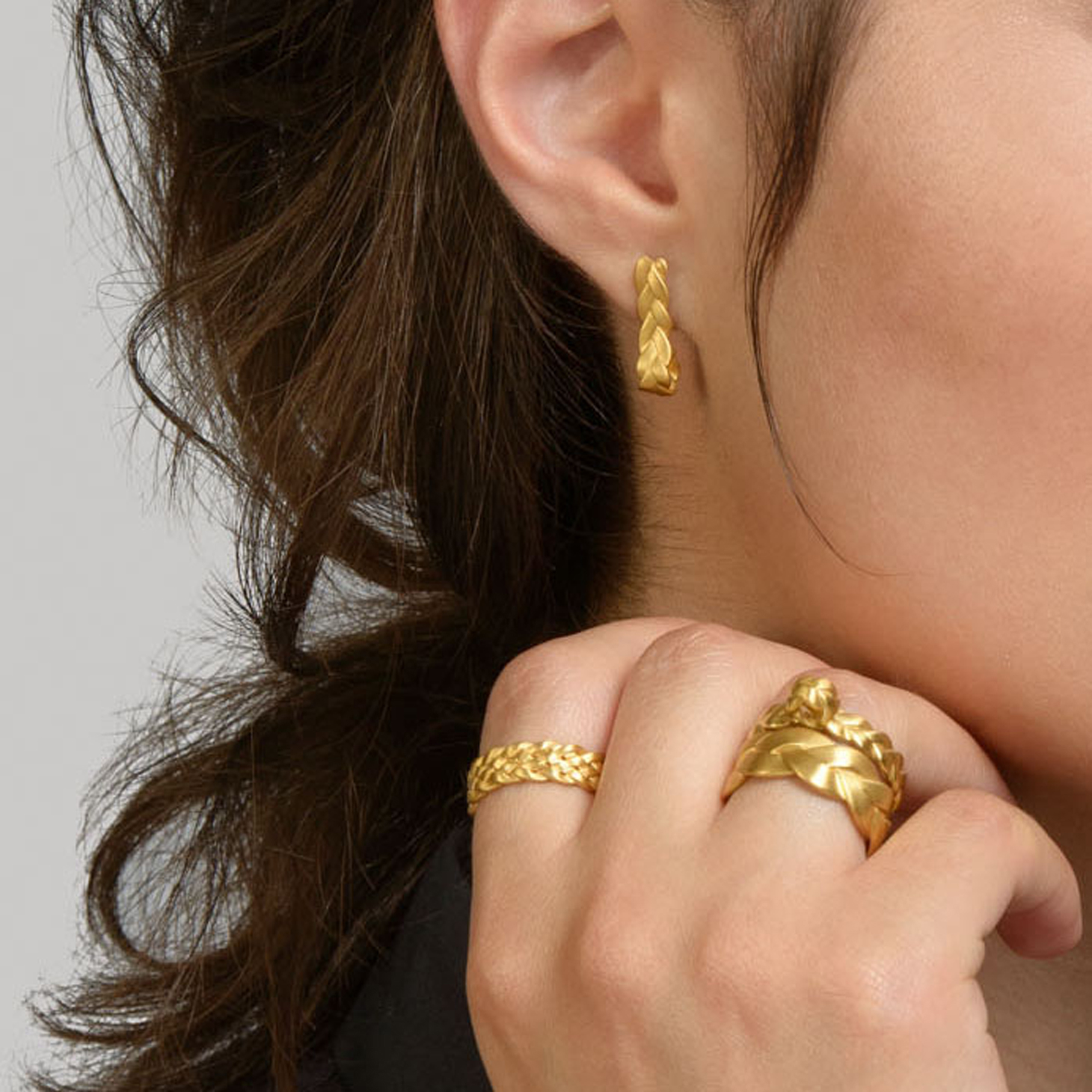
From The Braid Collecton by BALTERA
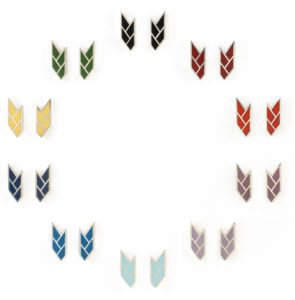
Enameled Osiris Stud Earrings
They have also excelled in their separate careers while working together on their own collection. They believe in drawing and sculpting, “happy accidents” that come from the process and being able to change and reconstruct an idea as it evolves. “We are passionate about the creative process and place equal importance on concept and craft, philosophy of branding and the responsibility we must have in bringing the most ethically sourced and locally made jewelry to market.” Julie explains.
I caught up with Rudy and Julie to talk about how they met, how they got started, their process and the design of their mythological and historically meaningful collection of rings in particular.
Beth: How and when did you meet?
Julie: We met in art school in Buffalo in 1994. Our mutual respect for each other and our art turned to friendship and friendship into love. We lived in a couple of places before moving to New York City and in 1998 moved to Greenpoint, Brooklyn, where we still live today.
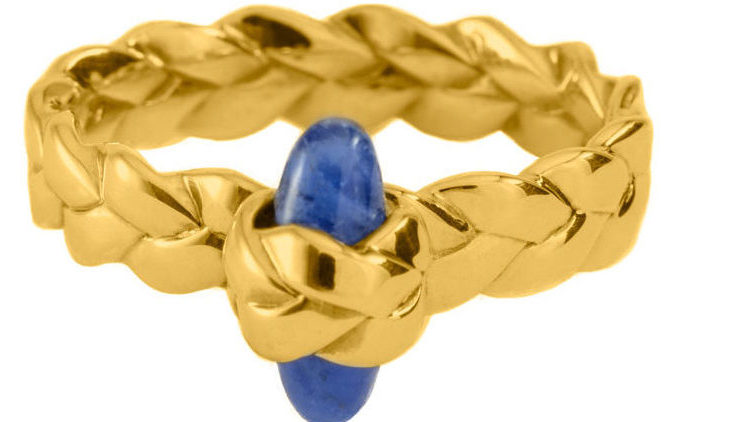
Beth: Did you both start out as sculptors?
Rudy: Yes. And, we both worked with the UB Casting Institute to help setup and run one of the largest institutional foundries in the United States. We cast large-scale bronzes, iron, silver and aluminum sculptures. Julie was awarded a grant to help run a bronze foundry in Cortona, Italy. And we both exhibited our sculptures nationally and abroad.
Beth: You both have separate careers, which you have been involved in since you moved to New York in 1998; can you tell us about them?
Rudy: I have been involved in the jewelry industry since 1999 and have also been working as a product designer since 2003. My background and experience includes projects for ER Butler, Gabriella Kiss, David Webb, Harry Winston, David Yurman and Tiffany & Co. among others.
Julie: I have been working as a surface designer and colorist since 2001. I’ve created original textile designs for women’s, men’s, and children’s fashion as well and contract and residential interiors. My experience includes projects for Uniqlo, Banana Republic, Ann Taylor, Paper Denim & Cloth. My larger scale work such as original murals and wallpaper can be found all over the US including the Four Seasons (Las Vegas) and The Bellagio.
Beth: When did you get the idea for your own jewelry collection?
Julie: After many years of working as designers for a diverse range of companies in within the fashion and design industries, we decided it was time to work together on castings once again- albeit this time, a lot smaller in scale and include a long time interest of fusing real glass with alloy.
Rudy: We still design for other companies and while our work for others has always been fulfilling, we’ve always longed to spend more, possibly all of our time building upon our own ideas & values. That’s why we started BALTERA. .We devoted any free time we have to building the collection, our philosophy about the brand and the ethics and social commitments for which we stand for as people and designers.
Beth: Can you tell us a little about your process?
Rudy: We have both gained invaluable experience and since I have worked in the jewelry business as a bench jeweler, model maker and designer since 1999, I have seen the industry’s growth and changes and been involved in all aspects of it—and was on the forefront of 3-d technology, 3-d printing and utilizing CAD since 1999. . But first, we start with a concept and then we both sit down and start with individual sketches and studies. Once we agree on a design/sketch we get together and create more detailed drawings. I then take that and create an initial 3-d cad so we can start to tweak the dimensional feel of the piece.
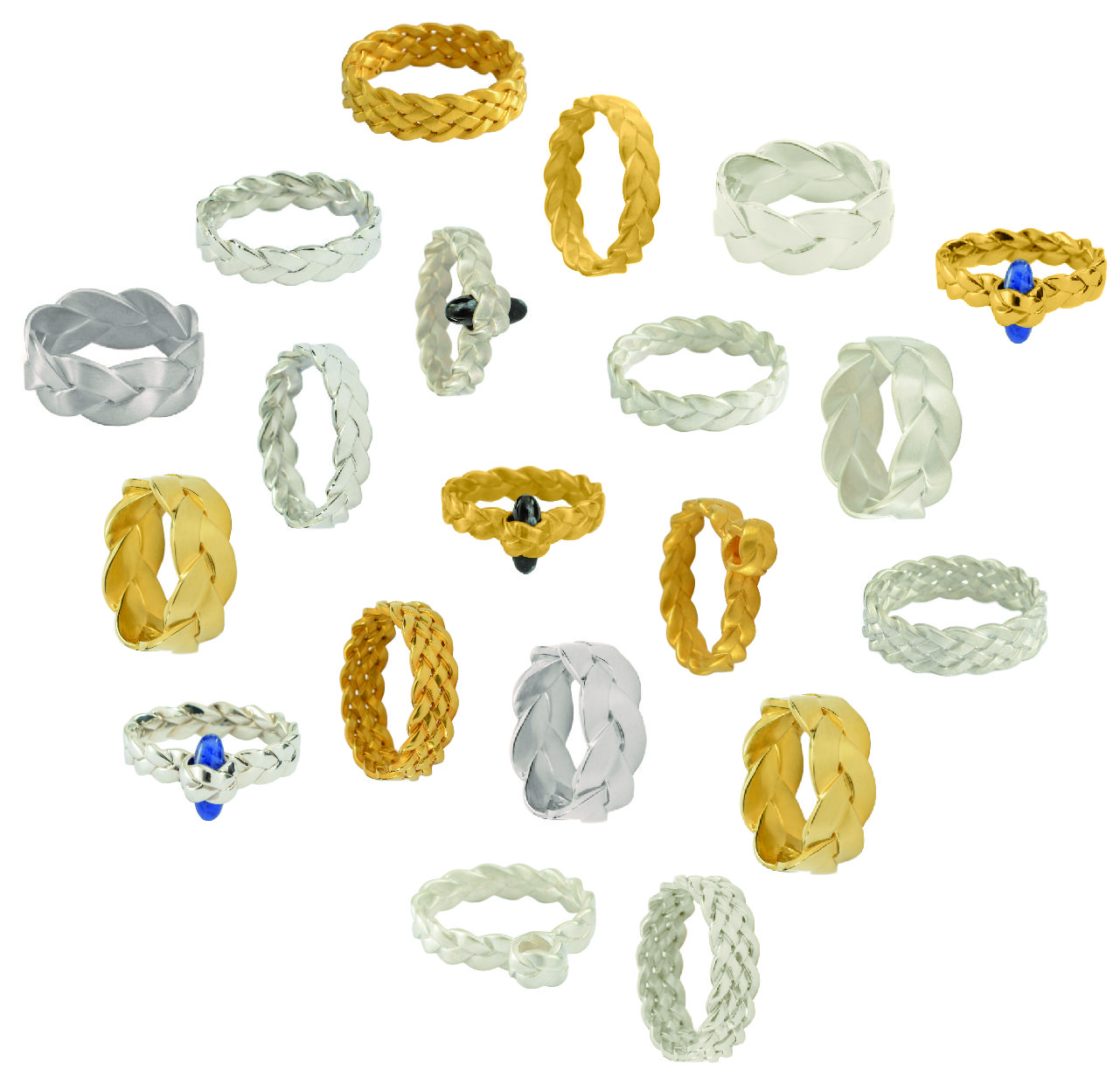
The Braid Ring Series In 18K Yellow Gold and Sterling Silver
We use a combination what we like to call ‘computer aided sculpture and the traditional techniques which we originally learned. This careful blending of methodologies enables us control over our designs. There is a constant back and forth between the two of us- lots of constructive criticism and reworking of every detail
Beth: Can you tell us about the enamel in your work?
Julie: Hours of handwork still go into each piece and are necessary in every step of the process.Enameling is truly a labor of love. It takes hours to slowly build up the enamel and requires careful finishing with multiple grits (up to 15) to get each surface to a fine polish or matte luster. Enameling is an ancient art, and we use only true Vitreous (Glass) enamel.Vitreous enamel has many excellent properties: smooth, hard, chemically resistant, durable, scratch resistant (5-6 on the Mohs scale), long-lasting color fastness, easy to clean, and it cannot burn.

The Enamel studs in a variety of colors
Enamel is glass, not paint, so it will not fade under ultraviolet light. Glass enamel has proven itself since the 13th century BC to be a beautiful and timeless art form. Some manufacturers and jewelers have chosen plastics (labeled cold enamel) sacrificing beauty, durability and value, things we pride ourselves on creating at BALTERA. We also believe there is enough plastic in this world and vitreous enamel adds to the inherent beauty and value of gold and silver.
Beth: I loved how you described your day on your website can you describe it for us here?
Julie: We wake up in the morning. (Ok. Rudy wakes up in the morning.) Rudy makes coffee while I stay in bed with the dog for as long as possible Eventually I get going, coffee in hand we trek across the Pulaski Bridge to our studio. I forget things. I make Rudy go back for them. Seven floors up and we get started. I fire up my computer and Rudy fires up the kiln. I work on colors; Rudy works on forms. Sometimes I work on forms. Sometimes Rudy works on…ok, I don’t let Rudy work on colors, and he won’t let me touch the espresso machine. But, we both work on making the best art we can, we do it in the city where we live, where we eat and where we play.
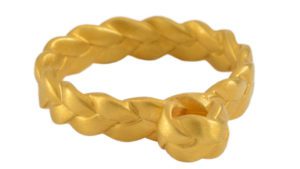 Beth: Can you tell us about the rings?
Beth: Can you tell us about the rings?
Rudy: Yes, you have been waiting to hear about these–they are your favorites—I think because you get into the mythology, history and legend like we do. Our Braid collection is available in high karat gold in different widths of braids and different textures and finishes, some with stones and some without. We chose the motif and symbolism of the braid due to its ability to change as it embraces and defies categorization of gender, religion and class. Its ability to transform, to be simple or complex, traditional or progressive has allowed the braid to become a vessel for symbolism from the Egyptians, through the Celts and Native Americans right up until today. And on top of all that the braid is useful – the braid has been essential in the advancement and movement of humankind.
- Inspirational shots for the braid collection from various time periods and cultures
Most notably as rope or line – braided line has raised the marble and stone of ancient architecture and has controlled the sails and rigging of boats for millennia. Braided copper cable fills our electronics and braided carbon fiber is revolutionizing industrial design and leading to previously unimagined advances.
Julie: To simplify, the braid to us signifies beauty, permanence, purpose and timelessness and these are also the hallmarks or basis of our entire design aesthetic, which is why it comprises our first signature collection.
Beth: Let’s talk a little about your ethical and social awareness and what your contribution to jewelry that relies on these factors?
Rudy: All of our pieces are made in our studio in Greenpoint, Brooklyn. We have an incredible caster in the Diamond District and trusted finishers, stonecutters and setters to help with special projects. With local production we are able to uphold our code of conduct, including proper wages, working hours, and work environment. Producing locally also reduces energy consumption, by way of decreased transportation and resources, thereby decreasing our carbon footprint. We believe strongly in supporting all of our design centers so they can maintain a strong presence in the city.
Additionally, this district supports small runs of production and the benefits of decreased lead times and more personal communication with the manufacturing process, all of which is imperative to a new designer surviving in a competitive marketplace.
Beth: Can you speak about your materials?
Julie: We incorporate luxurious yet socially and environmentally friendly materials into the collection. As designers in the jewelry industry we are taking a pro-active stance in sourcing from responsible suppliers. We use recycled platinum, gold and silver for our pieces. Our alloy suppliers only source and manufacture metals from ‘DRC-Conflict Free’ mines or other domestic U.S. sources. Whenever possible the stones are sourced from US mines. There are hundreds of gorgeous gems, but unless they can be ethically sourced or are from a fair trade supplier, we will turn them away. For diamonds under 1 carat we use only Kimberly Process Diamonds, anything 1 carat or above we work exclusively with Canadian diamonds. This way we can be sure the provenance of the stones.
Beth: You are really dedicated to doing the right thing while loving what you do! (That’s a statement not a question)
Rudy: Yes we are!
Beth: Getting back to the rings—do you see them as wedding bands?
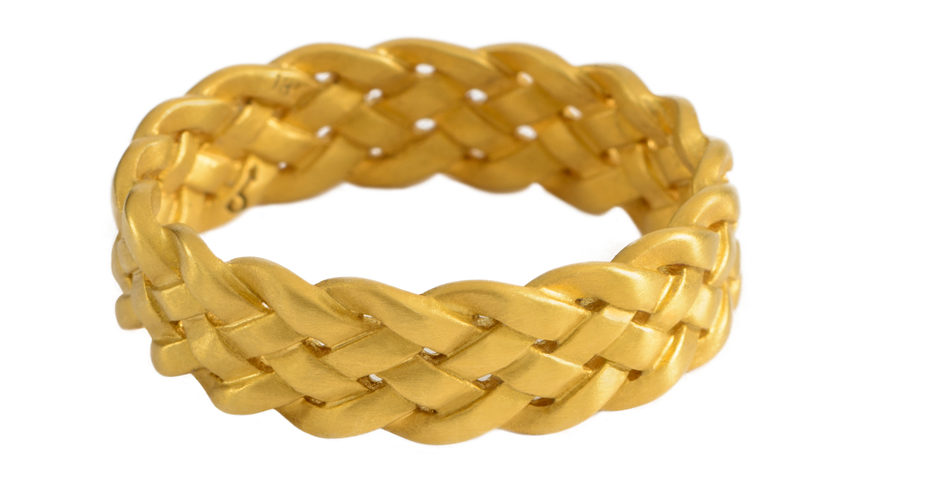
Julie; Definitely. Due to the various widths, styles and variations on the themes I can see them for both men and women. The meaning also plays a big part of the braid rings. But they can also be stacked together or with other rings in a woman’s collection. The choices are endless.
Beth: Like the braid itself—it’s woven together and also represents continuity and a union that is unbroken and is enduring through time. Much in the same way of the BALTERA collection!
In Collaboration with BALTERA.

